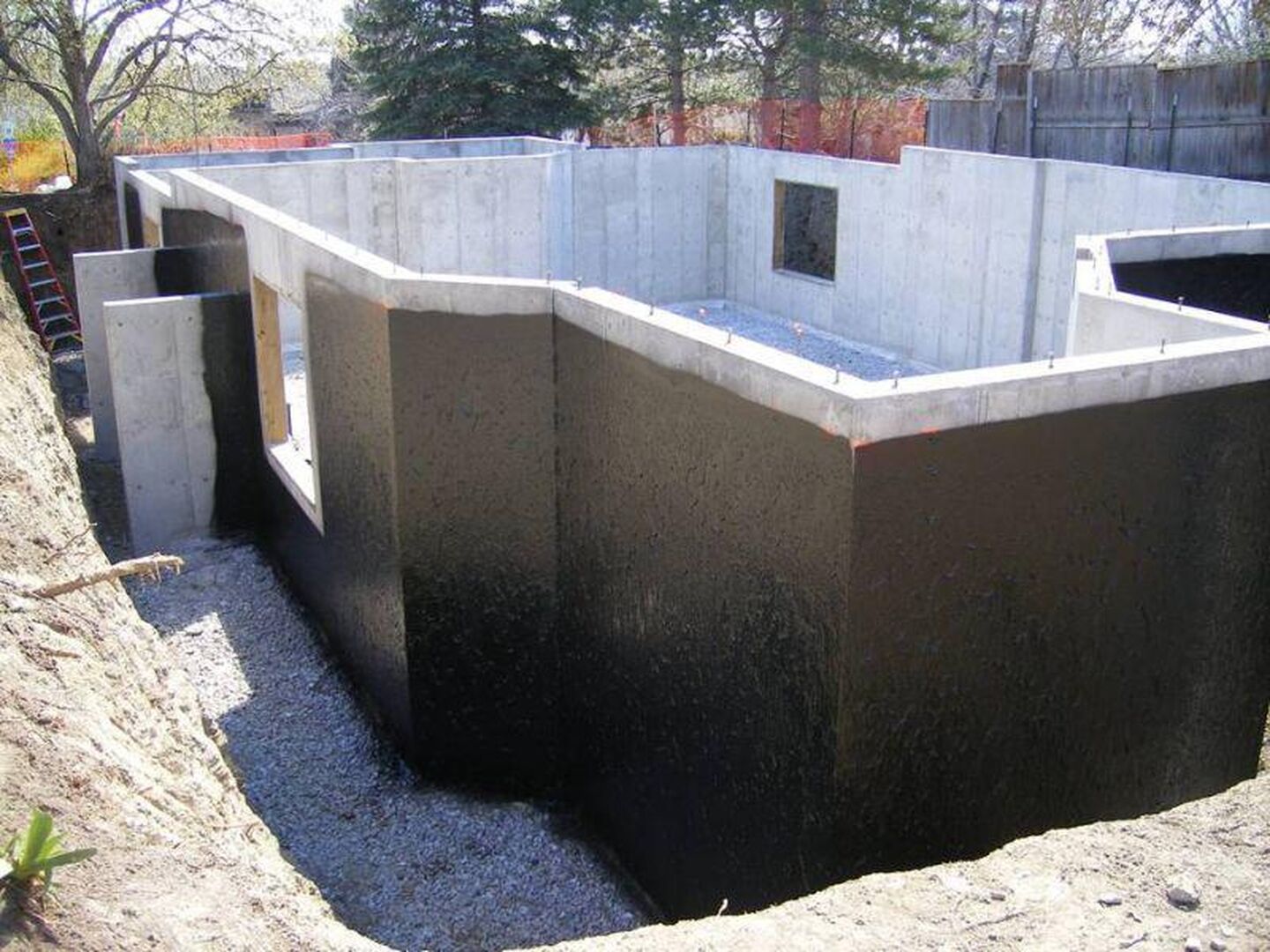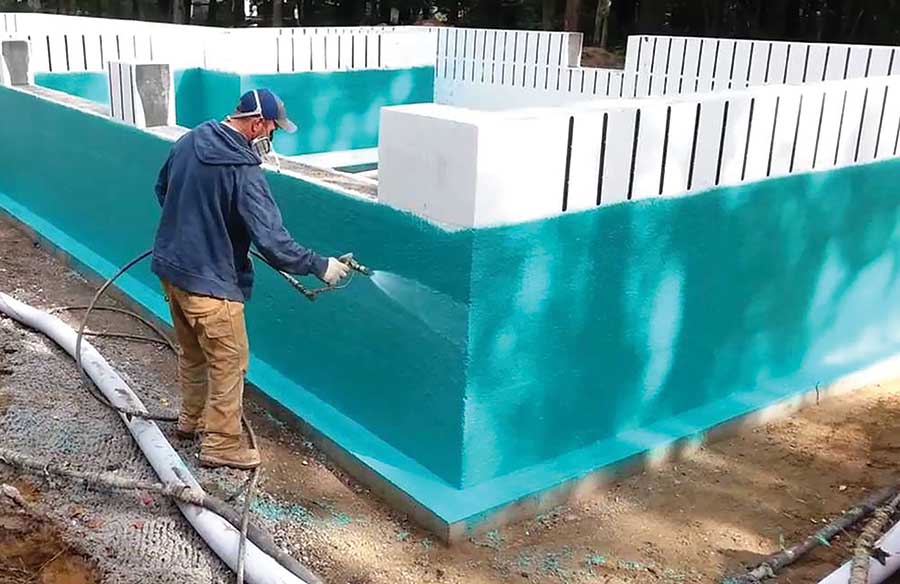French drain installation Omaha Explained: FAQs Answered
Exactly How Waterproofing Functions: An In-depth Take A Look At Techniques and Technologies
Waterproofing is important for protecting structures from moisture-related damage. It entails different methods and technologies that create barriers versus water breach. Typical approaches, such as compacted clay, exist together with modern-day advancements like liquid-applied membrane layers. Understanding the subtleties of these strategies is crucial for efficient application. Nevertheless, the efficiency of any type of waterproofing service hinges not just on the techniques used but likewise on continuous maintenance and evaluation. What are the key aspects that affect long-term performance?
Comprehending the Basics of Waterproofing
Waterproofing is an essential process that shields frameworks from water intrusion, which can cause significant damage gradually. This method involves the application of different products and techniques developed to produce a barrier versus dampness. The primary objective is to avoid water from permeating surface areas, which can trigger deterioration, mold development, and structural instability.Various elements affect the choice of waterproofing technique, consisting of the kind of framework, its location, and ecological conditions. Recognizing the physics of water activity and the residential or commercial properties of various products is critical in choosing an efficient waterproofing solution.Effective waterproofing not just safeguards buildings however also improves their long life and honesty. Generally, it is incorporated into the design stage of construction to guarantee detailed defense. As awareness of water-related problems expands, the relevance of comprehending waterproofing principles comes to be increasingly clear to architects, home builders, and homeowner alike.
Typical Waterproofing Methods
Traditional waterproofing techniques have been used for centuries, relying upon time-tested methods and products to secure frameworks from water damage. One of the earliest techniques includes making use of clay, which, when compacted, produces a natural barrier versus dampness. Furthermore, asphalt, a sticky, black material derived from oil, has actually been utilized for its water-resistant homes, typically applied to roofing systems and foundations.Another technique includes the application of lime-based plasters, which offer a breathable layer that permits moisture to escape while stopping water access. Thatch roof covering, a conventional method still seen in some societies, supplies excellent waterproofing due to its tightly packed straw layers.Moreover, making use of stone and brick has projected, as these products are naturally immune to water when appropriately mounted. In general, standard waterproofing approaches emphasize the significance of picking appropriate materials and building and construction practices to enhance durability against water invasion.
Modern Waterproofing Technologies
Innovations in modern-day waterproofing technologies have actually revolutionized the way structures are shielded from water damage. Ingenious techniques such as liquid-applied membrane layers and sophisticated sealers have actually improved the effectiveness and convenience of waterproofing services. These modern technologies permit seamless application, lowering the threat of leaks and making sure detailed coverage over complicated surfaces.Moreover, the integration of clever technologies, such as moisture sensing units and automated surveillance systems, enables real-time evaluation of waterproofing efficiency. This proactive method promotes prompt maintenance and decreases long-lasting repair costs.Additionally, developments in spray-applied finishings provide quick application and superb attachment, adjusting to different substrates while providing durable protection. Strategies like polymer-modified systems additionally improve flexibility and resilience, making them ideal for varied atmospheres. Overall, contemporary waterproofing technologies not just reduce water intrusion yet likewise add to the longevity and sustainability of frameworks, noting a considerable shift in the industry.
Products Used in Waterproofing
The effectiveness of waterproofing solutions greatly relies upon the materials made use of in their application. Numerous products are used to develop barriers versus water ingress, each with special properties fit for various environments. Frequently made use of materials include membrane layers, coverings, and sealants.Liquid-applied membrane layers, frequently made from polyurethane or acrylic, develop a smooth barrier that adjusts to complex surface areas. Sheet membrane layers, generally created from rubber or thermoplastic, deal resilience and are optimal for larger locations. Additionally, cementitious waterproofing products, composed of cementitious substances, supply excellent attachment and flexibility.Sealants made from silicone or polyurethane are necessary for joints and seams, making sure extensive defense. In addition, advanced products, such as geo-composite membranes, integrate numerous functions, improving efficiency. Overall, the selection of waterproofing products is essential in attaining durable and reliable water resistance, customized to certain job demands and environmental conditions.
Usual Applications of Waterproofing
Waterproofing plays an important role in numerous industries, guaranteeing the longevity and integrity of frameworks. Usual applications include property services that protect homes, business framework that safeguards services, and commercial setups that require robust security against dampness. Comprehending these applications highlights the significance of waterproofing in keeping both security and functionality throughout different settings.
Residential Waterproofing Solutions
Numerous homeowners encounter challenges with dampness invasion, making reliable property waterproofing solutions essential. Different approaches exist to address this issue, consisting of exterior and interior waterproofing systems. Interior solutions commonly directory involve the application of sealers and finishings to basement wall surfaces, which help protect against water infiltration. Outside techniques commonly include the setup of water drainage systems and water resistant membrane layers that draw away water away from the foundation.Additionally, property owners might consider sump pumps to eliminate water buildup and dehumidifiers to regulate humidity levels. Appropriate grading and using rain gutters likewise play a vital role in handling water circulation around the home. By applying these methods, house owners can greatly reduce the danger of water damages and mold and mildew development, ensuring a dry and safe living environment.

Commercial Facilities Defense
Effective waterproofing options play a crucial duty in the protection of industrial framework. Water Solutions Omaha. These methods are essential for protecting structures, car parking frameworks, and bridges from water damages, which can endanger structural honesty site here and lead to costly repair services. Usual applications include the setup of membrane layers, layers, and sealants that create barriers versus moisture seepage. Locations such as cellars, roofings, and outside wall surfaces are often prioritized to assure long life and longevity. Furthermore, waterproofing systems can improve power performance by avoiding water-related problems that might bring about mold and mildew development and damage. By applying robust waterproofing measures, residential property proprietors can secure their investments and maintain operational performance, inevitably adding to the overall sustainability of commercial centers
Industrial Applications Introduction
While various fields face special challenges, the demand for dependable waterproofing solutions continues to be a constant in industrial applications. Industries such as manufacturing, building, and energy usually encounter environments where moisture exposure can endanger architectural honesty and functional performance. In manufacturing facilities, waterproofing is crucial for securing equipment and products from water damages. In building, it safeguards structures and cellars versus groundwater seepage. The power market depends on waterproofing for the defense of devices in hydroelectric plants and offshore frameworks. In addition, food handling industries utilize waterproofing to guarantee hygiene and compliance with safety standards. In general, efficient waterproofing services are crucial for boosting durability, safety, and performance throughout different industrial settings.
Upkeep and Long Life of Waterproofing Solutions
Waterproofing solutions are designed you could try these out to supply lasting security against dampness invasion, regular maintenance is essential to assure their performance and long life. Regular inspections play a considerable role in recognizing possible concerns such as fractures, peeling, or indications of water damage. Resolving these troubles quickly can protect against more wear and tear and costly repairs.Additionally, cleansing the surface of waterproof locations helps eliminate dust and debris that might endanger the integrity of the waterproofing barrier. It's additionally recommended to reapply safety finishings or sealers as recommended by suppliers to maintain optimal efficiency. Ecological elements, such as UV direct exposure and severe weather, can affect the lifespan of waterproofing products, making regular assessment important
Often Asked Inquiries
Can Waterproofing Be Applied in Winter?
The question of applying waterproofing in winter increases worries regarding bond and treating. Lots of items might not do at their ideal in reduced temperature levels, demanding mindful selection and consideration of particular standards for reliable application.
Just How Lengthy Does Waterproofing Normally Last?
The duration of waterproofing efficiency varies based on materials and environmental elements. Typically, it can last from five to ten years, but regular maintenance and evaluations are necessary to assure peak efficiency and durability.
Is DIY Waterproofing Effective and Safe?
The effectiveness and security of DIY waterproofing depend on different aspects, including material top quality and application method. While some individuals attain satisfying results, others might experience issues that endanger long-lasting protection and architectural stability.
What Are the Signs of Failing Waterproofing?
Indicators of stopping working waterproofing include noticeable water spots, peeling off paint, mold development, mildewy odors, and wetness in walls or ceilings - Landscape drainage Omaha. These indications suggest endangered barriers, requiring prompt assessment and potential remediation to stop additional damages
How Do I Select the Right Waterproofing Contractor?
